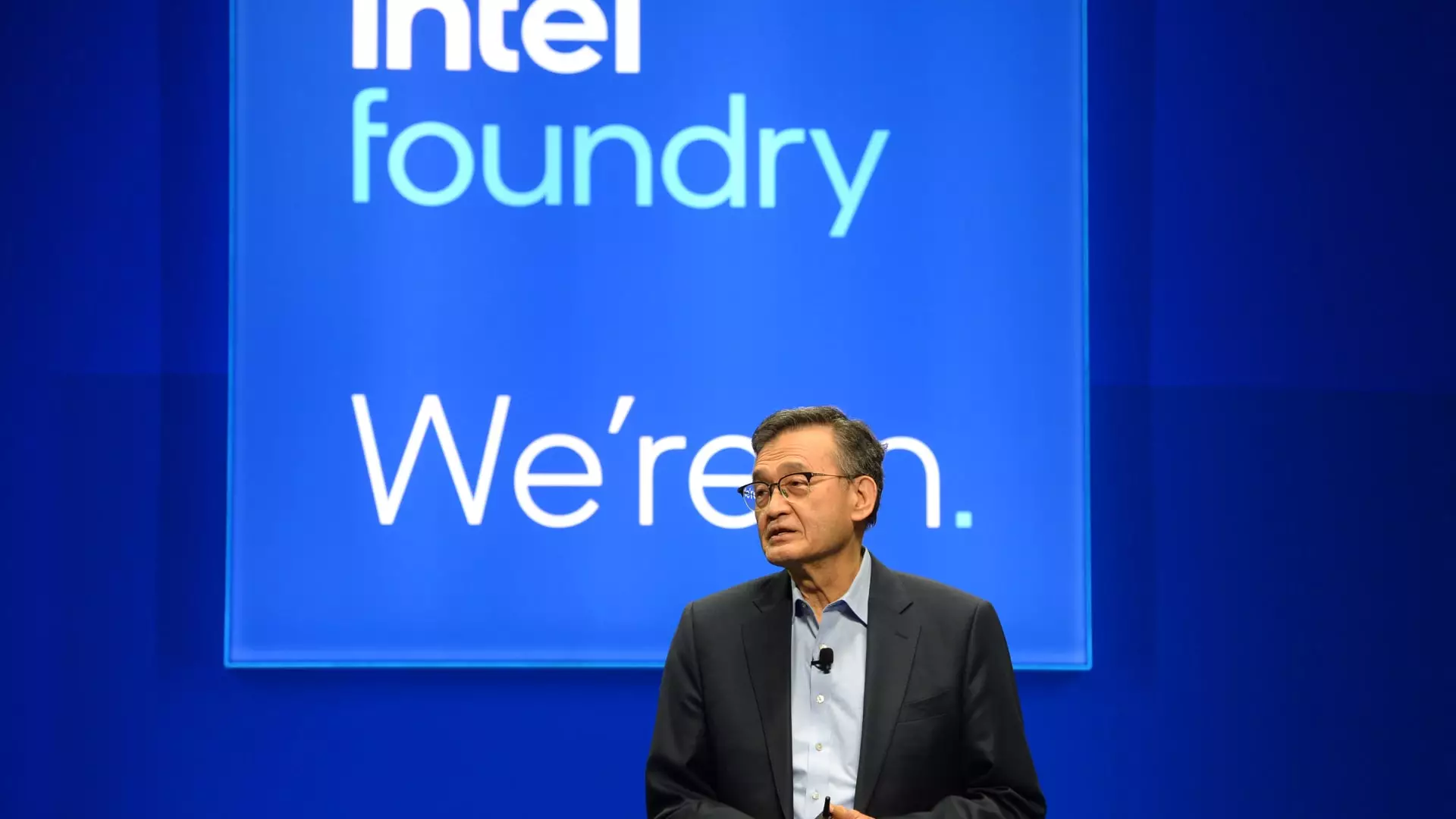Intel’s recent stock plunge, plummeting approximately 9%, signals a company at a crossroads, grappling with profound strategic dilemmas amid a fragile recovery. Despite posting better-than-expected earnings—beating revenue forecasts and surpassing analyst estimates—investors fixate on the ominous signs of decline. The core issue lies not solely in the financials but in the company’s faltering ability to secure its future in a rapidly evolving semiconductor landscape. As market share diminishes and ambitions in artificial intelligence remain unmet, Intel’s leadership must confront the harsh reality that its traditional business model may no longer suffice. The decision to cut foundry costs and scale back manufacturing ambitions underscores an urgent attempt to stem losses—but at what cost?
Decoding the Foundry Dilemma
At the heart of Intel’s quandary is its foundry business—a segment that was once touted as a strategic differentiation but now seems more like a liability than an asset. The company’s recent SEC filing starkly reveals an unsettling truth: Intel has failed to attract significant external customers for its manufacturing nodes, particularly for its upcoming 14A process. The uncertainty surrounding its foundry ambitions is alarming. With a potential pause or complete discontinuation on the table if client commitments don’t materialize, Intel’s future manufacturing prospects hang in the balance.
This predicament stems from how the industry has shifted. The fiercely competitive foundry market is dominated by players like TSMC and Samsung, which have entrenched relationships and substantial technological lead. Intel’s internal challenges—such as fragmentation of its factory footprint, underutilization of capacity, and excessive investments—have left it unable to effectively leverage its manufacturing prowess. Its failure to secure external clients not only hampers revenue streams but also diminishes the company’s credibility and influence in the chip ecosystem. This cycle of underperformance and lost confidence becomes a self-reinforcing problem, rendering its manufacturing aspirations increasingly tenuous.
Strategic Missteps and Leadership Challenges
Since assuming leadership from Pat Gelsinger, CEO Lip-Bu Tan has faced a turbulent environment. His acknowledgment that “the first few months have not been easy” hints at the depth of the challenges. The massive layoffs—eliminating 15% of the workforce—are drastic measures reflecting a company desperate to recalibrate. These cuts, combined with closure plans in Germany and Poland and slowed production at Ohio, suggest a shift from expansive ambitions to survival mode.
However, these cost-cutting measures also expose a significant strategic misalignment. Excessive investments made over recent years, driven by aspirations of rapid growth in AI and new manufacturing nodes, were perhaps overly optimistic. Tan admits that demand did not meet expectations, leading to underutilized facilities and lingering overcapacity. This misjudgment indicates a fundamental flaw in forecasting market needs, revealing that Intel’s growth narrative was built on overly ambitious projections rather than solid, verified demand.
The widening net loss—$2.9 billion in the latest quarter—reflects the deep financial hole the company finds itself in. The impairment charges, especially the $800 million related to surplus tools with no re-use potential, highlight the costly nature of Intel’s overextension. While some analysts view scaling back on foundry ambitions as a “positive step,” skepticism remains about whether this will be enough to arrest ongoing market share erosion. Intel’s persistent struggles in the AI space—dominated by Nvidia—compound these issues, signaling that strategic retrenchment may need to be accompanied by innovation and aggressive repositioning.
The Broader Market and Competitive Landscape
The semiconductor industry’s landscape is brutal and unforgiving. Industry giants like TSMC and Samsung continue to outpace Intel in both technological innovation and customer relationships. Intel’s struggles to attract external clients for its manufacturing nodes, despite its technological capabilities, demonstrate the importance of customer trust and ecosystem integration—elements that cannot be restored through investments alone.
Moreover, Intel’s narrative around its foundry business resonates with some analysts who see these moves as a necessary recalibration rather than a sign of defeat. Nonetheless, the company’s market share losses—wiping out most gains made earlier this year—reflect a reality in which Intel must realign its strategies with concrete demand. Tentative efforts, such as building new process nodes based on confirmed customer commitments, appear more like cautious steps rather than bold leaps. Without a clear, unwavering customer base, the future of Intel’s manufacturing ambitions remains uncertain.
In the end, Intel’s predicament is a stark reminder of the volatile nature of the semiconductor industry—heightened by technological shifts, fierce competition, and the relentless demand for innovation. While reducing costs and downsizing manufacturing facilities might stabilize the company’s financial standing temporarily, it does little to address the core issues of trust, technological relevance, and market positioning. For Intel, the path ahead demands not just strategic cuts, but a bold, confident reinvention—something it has yet to convincingly demonstrate.

